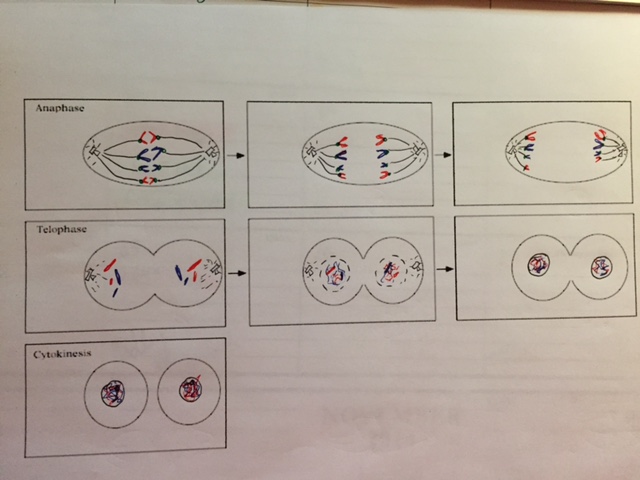
More lessons for Biology are available at Human Body Activities (Body Systems, Skeletal System, Muscular System) The cell may then divideby cytokinesis to produce two daughter cells.Genetics with a Smile + SpongeBob GeneticsĮgg-cellent Ideas for Osmosis & Diffusion

RESULTS OF MITOSISThe result of mitosis is that two geneticallyidentical daughter nuclei. TELOPHASEA nuclear membrane appears and forms around thechromatin.Chromosomes began to separateThe spindle fibers began to brake down.Two identical nuclei form in the cell.

METAPHASEThe chromosomes line up in a single file in the middle of thecell when it is going to be dividedĪNAPHASE- The two sister chromatids in each chromosome separate fromeach other.- The spindle fibers pull them in opposite directions-Once separated, the chromatids are now two identical single-stranded chromosomes.- As they move to opposite sides of a cell, the cell begins to getlonger.-Anaphase is complete when the two identical sets ofchromosomes are at opposite ends of a cell. PROPHASECopied DNA changes into chromosomesThe nucleolus disappears form the cell and the nuclearmembrane break downThe spindle fibers begin to form in the cell PHASES OF MITOSISProphaseMetaphaseAnaphaseTelophase

Mitosis occurs in the following circumstances:Development and growth. WHY IS MITOSISIMPORTANT ?Mitosis is important for the maintenance of the chromosomalset each cell formed receives chromosomes that are alike incomposition and equal in number to the chromosomes of theparent cell.

MITOSISA type of cell division that results in two daughtercells each having the same number and kind ofchromosomes as the parent nucleus, typical ofordinary tissue growth.


 0 kommentar(er)
0 kommentar(er)
